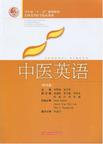中医英语
出版时间:2009-8 出版社:上海科学技术出版社 作者:李照国,张庆荣 主编 页数:238
Tag标签:无
前言
2007年,由李照国教授和朱忠宝教授主编、上海科学技术出版社2002年出版的《中医英语》被评为卫生部“十一五”规划教材。2008年5月,经全国各中医院校推荐,出版社组织专家评审,组成了新的编写委员会并于2008年7月底在上海召开了编写会议。经过与会专家的讨论,确定了本教材的编写原则、内容安排和审订事宜。 根据编委会的一致意见,本教材的编写以原有教材为蓝本,根据目前的教学发展情况,精简和增添了部分内容。本教材的编写实行主编、副主编负责、编委参与的原则。每一位主编和副主编与若干编委合作,共同完成所负责课目的修改、精简和增补工作,主编负责全书的统稿。全书统稿完毕后,送国内外专家审订。本教材的第1、第2、第7、第8、第9和第20课由张庆荣教授负责;第6、第11、第12、第16和第17课由曹立娅教授负责;第2l课由黄嘉陵教授负责;第3、第4、第13、第14和第15课由李永安教授负责;第5、第10、第18和第19课由李敏副教授负责;全书课后翻译技巧讲座由李照国教授负责编写;全书课后听力内容由张旭教授负责编写并负责听力内容的光盘录制工作。经过编委会成员的积极努力,编写工作按计划完成。2009年3月,本教材的审稿会议在西安召开,参加会议的有本教材的主编和副主编、责任编辑和编委会学术秘书等。会议期间,按照中医院校目前的教学情况,对本教材内容作了进一步的优化,使其能更好地服务于教学。
内容概要
1.本教材共有21课,各院校可根据实际情况,并结合大学英语和研究生英语教学大纲关于专业英语教学的要求安排课时计划,组织课堂教学。 2.课文与翻译技巧部分为主要教学内容,教师可根据课文内容并结合中医英语翻译在国内外的发展实际讲解翻译技巧部分,使学生通过学习能基本掌握中医英语翻译的方法和技巧。 3.课后练习主要是为了巩固和提高课文内容和翻译技巧部分所涉及的知识点而设,供学生课后练习之用。教师亦可结合教学实际,有选择性地进行课堂训练和讲解。 4.阅读理解部分选自国内外出版的不同专业书刊。为反映中医英语在国内外的发展现状,这部分内容中的名词术语大都未作改动,供学习时参考。教师在教学中可根据实际情况,对有关术语的翻译作必要的解释。 5.由于中医名词术语的英语翻译目前还没有完全实现标准化,本教材在编写时主要参考了“世界卫生组织(WHO)西太区”和“世界中医药学会联合会”所颁布的有关标准,并依据中医英语翻译在国内外的发展现状和趋势,作了必要的调整。
书籍目录
Lesson 1 Traditional Chinese Medicine. History and DevelopmentLesson 2 The Basic Characteristics of TCM Theoretical SystemLesson 3 The Theory of Yin and Yang Lesson 4 The Theory of Five ElementsLesson 5 The Theory of Visceral ManifestatiorLesson 6 The Five Zang-OrgansLesson 7 The Six Fu-OrgansLesson 8 Qi, Blood and Body FluidLesson 9 Relationships among Qi, Blood and Body FluidLesson 10 The Meridian SystemLesson 11 EtiologyLesson 12 Pathogenesis Lesson 13 The Four Diagnostic MethodsLesson 14 Pulse TheoryLesson 15 Eight PrinciplesLesson 16 Chinese Medicinal HerbsLesson 17 Traditional Chinese Medical PrescriptionsLesson 18 Acupuncture and MoxibustionLesson 19 Essentials of Tuina TherapyLesson 20 Cold Fluid Retention in the Lung:A Case RecordLesson 21 Modern Development of Traditional Chinese Medicine
章节摘录
Man lives in the natural world and the natural world provides man with all the necessities indispensable to his existence. At the same time, the changes in nature directly or indirectly affect the human body. Take seasonal changes for example, usually spring is marked by warmth, summer by heat, late summer by dampness, autumn by dryness and winter by cold. Under theinfluence of such changes, the living things on the earth will also change to adapt to environmentalvariation, such as sprouting in spring, growing in summer, alternation in late summer, ripeness inautumn and storage in winter. The human body is no exception and it also makes correspondingchanges to adapt to the changing seasons. For example, in spring and summer, yang qi goesoutward and flourishes, qi and blood of the body tend to circulate superficially, consequentlyleading to more sweating and less urination. And during autumn and winter, yang qi goes inwardand astringes, qi and blood of the body tend to flow internally, causing less sweating and moreurination. In this way the body keeps its balance of water metabolism and avoids overconsumption of yang qi.ii. Treatment based on syndrome differentiationTreatment based on syndrome differentiation, another important feature of the theoreticalsystem of TCM, is a basic principle in TCM for understanding and treating disease. Syndrome isthe generalization of the progress of a disease at a certain stage. Since it involves the location~cause and nature of the disease, and the relation between pathogenic factors and healthy qi,syndrome can comprehensively and accurately reveal the nature of the disease. Syndromedifferentiation implies that the clinical data of a patient collected through the four examinations areanalyzed and generalized so as to identify the pathological mechanism of the disease. Treatmentmeans to select the corresponding therapy according to the result of syndrome differentiation.Taken as a whole, treatment based on syndrome differentiation is a process to understand andresolve a disease.TCM emphasizes the differentiation of syndrome, because only when the syndrome isaccurately differentiated can a correct treatment be made. Take common cold for example, itssymptoms of fever, aversion to cold and pain in the head and body indicate that the disease is inthe exterior. However, it is usually differentiated into two syndromes: common cold due to wind-cold and common cold due to wind-heat. For the treatment of the former syndrome in commoncold, herbs pungent in taste and warm in nature are used; while for the treatment of the lattersyndrome, herbs pungent in taste and cool in nature are used. So accurate differentiation ofsyndrome is the prerequisite for determination of a proper treatment. The core of treatment basedon syndrome differentiation is to understand the relation between the nature and manifestation of adisease.
编辑推荐
《中医英语》是由上海科学技术出版社出版的。
图书封面
图书标签Tags
无
评论、评分、阅读与下载
用户评论 (总计36条)
- 跟旧版相比翻译技巧这一部分比较混乱,课文语言有所改进。与市面其他同类书相比较,这本书还是比较有购买价值的。适合中医院校本科及研究生使用。可惜课后习题没有答案。
- 书很好~是学校的教材, 中医翻译真心难的,用这个标准化解释地非常好~
- 中医外向的教材,我们专业不学,自己买来看,有少许错误。课文有朗读就好了。后面的口语录音不是很用心。
- 对于初学者来说,无疑是一本经典而易懂的书籍,汇集了非常专业的翻译词汇,可以从中学到许多标准的国际翻译!
- 学中医的人应该多看看
- 对我们学中医的人很有用!
- 太不好意思了,评论晚了。
- 书很好,英译挺标准,看得出编者的态度很认真严谨。
- 看了以后再来写
- 为了充实自己买的,当工具书吧
- 卖家和快递都不错
- 这件商品真的好 对我很有帮助
- 忘确认收货了,发货很快,不错
- 还行的吧!!
- 由于中医名词术语的英语翻译目前还没有完全实现标准化,本教材在编写时主要参考了“世界卫生组织(WHO)西太区”和“世界中医药学会联合会”所颁布的有关标准,并依据中医英语翻译在国内外的发展现状和趋势,作了必要的调整。
- 买来就是为了中医论文的英文摘要的,没想到考博面试的时候还用到了。不过我学的伤寒论的内容太少,希望改版时能补点吧。
- 内容不错 以前借外向系的同学的书。但是确实有少许错误 可是对比过后 本书还是比较合适我的 瑕不掩瑜吧~~
- 还可以,内容还蛮好的,只是送来包装差了点。
- 作为教科书买的,还是不错!
- 中医翻译,任重道远
- 这本中医英文不适合我!
- 可以提升一下自己的英文
- 刚买回来,还没细看,大体一看感觉挺好
- 是新概念英语的模式,对听读写译说都是很好的教材。
- 光盘里好像只有附录里对话的录音,如果有课文的音频资料就完美了
- 有内容有联系,还是挺不错的!
- 书很好,是我要的那本,不错不错。。。
- 全是中医的知识,还是英语的~神一样的天书啊~
- 教科书,基础,好用,难得有买的
- 还不错,下次会继续选购。。
- 东西很给力,效果不错
- 这本书质量很好,是正版,性价比高,推荐购买
- 还好,东西是正版,好
- 书包装的很好,里面的光盘也没有少,是正版的~~
- 用词专业,是一本学习中医英语不可多得的好书。
- 还行,作资料收藏的。需要时会拿出来翻翻。
推荐图书
- ~JC DRAGON BALL 完全版 全34巻セットA
- ~JC DRAGON BALL 完全版 全34巻セットB
- BLEACH―ブリーチ― 2
- BLEACH―ブリーチ― 3
- BLEACH―ブリーチ― 4
- BLEACH―ブリーチ― 5
- BLEACH―ブリーチ― 6
- BLEACH―ブリーチ― 7
- BLEACH―ブリーチ― 8
- BLEACH―ブリーチ― 9
- BLEACH―ブリーチ― 10
- Dragonball Z孫悟空伝説―テレビアニメ完全ガイド
- BLEACH―ブリーチ― 11
- BLEACH―ブリーチ― 12
- BLEACH―ブリーチ― 13
- BLEACH―ブリーチ― 14
- BLEACH―ブリーチ― 15
- BLEACH―ブリーチ― 16
- BLEACH―ブリーチ― 17
- BLEACH―ブリーチ― 18
- BLEACH―ブリーチ― 19
- BLEACH―ブリーチ― 20
- BLEACH―ブリーチ― 21
- BLEACH―ブリーチ― 22
- BLEACH―ブリーチ― 23
相关图书
- 五年奥数试题透视
- 2005~2009(上海卷)
- 2005~2009(上海卷)
- 五年中考试题透视(上海卷)
- 五年高考试题透视(上海卷)
- 五年高考试题透视.2005~2009(上海卷)
- 牛津英语
- 第七届中国建筑学会青年建筑师奖获奖者作品集
- 第五届中国建筑学会建筑创作奖精选
- 中国太阳能建筑应用发展研究报告
- 住宅标准化产品图库(第一册)
- 中国建筑史
- 斯沃泰尔的故事The Story of Edgar Sawtelle
- 轻轻一推NUDGE HTALER&SUNSTEIN
- The Feng Shui Bible: The Definitive Guide to Improving Your Life (平装)
- Asian Twist: A Contemporary Taste of East Meets West (精装)
- Banking Reforms in South-East Europe (精装)
- Wall to Wall: 100 Great Treatments for Vertical Surfaces (精装)
- China and Glass: Inspired Ideas for Using and Displaying Pieces Around the Home (精装)
- Dictionary of Business and Economics, Rev. Ed. (平装)
- 機動戦士ガンダムUC
- 機動戦士ガンダムUC
- 機動戦士ガンダムUC
- 機動戦士ガンダムUC
- チーズスイートホーム 5 限定版
